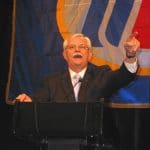WASHINGTON – The National Transportation Safety Board has updated its “Most Wanted” transportation safety improvements. Included are recommendations for improved bus, rail and aviation safety.
Following are the NTSB’s comments of interest to UTU members:
Fatigue
Airplanes, buses and trains are complex machines that require the full attention of the operator, maintenance person and other individuals performing safety-critical functions.
Consequently, the cognitive impairments to these individuals that result from fatigue due to insufficient or poor quality sleep are critical factors to consider in improving transportation safety.
Operators of transportation vehicles need to have sufficient off-duty time to obtain sufficient sleep. But duty schedules are only part of the equation. Even when an individual has enough time to get rest, medical conditions, living environment, and personal choices can affect the ability to obtain quality sleep.
Human fatigue is subtle; at any given point, the traveling public could be at risk because those operating airplanes, buses or trains, or the individuals responsible for maintaining vehicles, do not realize until it is too late that they cannot safely complete their duties because of fatigue.
To make matters worse, people frequently are not aware of, or may deny, ability impairments caused by fatigue. Just because an operator or mechanic is not yawning or falling asleep does not necessarily mean that he or she is not fatigued.
What can be done: Continued research on the manifestations of fatigue will help in further identifying mechanisms that can counter, and ultimately eliminate, fatigue.
Such research needs to recognize the unique aspects of fatigue associated with each mode of transportation, such as the effect of crossing multiple time zones or being required to work during periods of the day when circadian rhythms increase the risk of fatigue.
Fatigue-countering mechanisms must include science-based, data-driven hours-of-service limits.
The medical oversight system must recognize the dangers of sleep-related medical impairments, such as obstructive sleep apnea, and incorporate mechanisms for identifying and treating affected individuals.
Employers should also establish science-based fatigue management systems that involve all parties (employees, management, interest groups) in developing environments to help identify the factors that cause fatigue; and monitor operations to detect the presence of fatigue before it becomes a problem.
Because “powering through” fatigue is simply not an acceptable option, fatigue management systems need to allow individuals to acknowledge fatigue without jeopardizing their employment.
Bus Safety
Motorcoaches are among the safest vehicles on the road. They are rarely involved in highway accidents.
However, motorcoaches transport 750 million passengers annually, with each bus carrying a substantial number of people. Therefore, when something does go wrong, more people are at risk of death or injury. As in any traffic crash, an occupant’s chance of surviving and avoiding injury increases when the person is retained in the vehicle, and particularly in his or her seating position.
Without standards for roof strength, window glazing, and a protected seating area, motor coach accidents can be catastrophic. Even when the motorcoach remains relatively intact during an accident, passengers lacking a protective seating environment can be thrown from their seating area and killed or injured.
What can be done: Adequate standards for roof strength, window glazing, and occupant protection must be developed and implemented. These standards must ensure that the vehicles maintain survivable space for occupants during all types of crashes with significant crash forces, including rollovers.
Manufacturers are moving ahead with various seating area safety options, such as seat belts, but the development and implementation of government standards is needed to ensure a consistent level of safety across the fleet. Motorcoach interiors should be more occupant friendly in order to prevent injury in the event of a crash.
In addition, after a crash, occupants need to be able to identify exits and quickly leave the vehicle.
Commercial Aviation
Crew resource management (CRM) training is designed to improve crew coordination, resource allocation and error management in the cockpit. CRM training augments technical training, enhances pilots’ performance and encourages all flight crew members to identify and assertively announce potential problems by focusing on situational awareness, communications skills, teamwork, task allocation, and decision-making within a comprehensive framework of standard operating procedures.
Takeoffs and landings, in which the risk of a catastrophic accident is particularly high, are considered the most critical phases of flight.
Unlike the airspace above the United States, which spans millions of square miles, the runway environment is a far more limited area, often with a steady stream of aircraft taking off and landing on intersecting runways, sometimes in poor weather and with limited visibility.
What can be done: Reducing the likelihood of runway collisions is dependent on the situational awareness of the pilots and time available to take action — often a matter of just a few seconds. A direct in-cockpit warning of a probable collision or of a takeoff attempt on the wrong runway can give pilots advance notice of these dangers.
Requiring specific air traffic control clearance for each runway crossing would reduce the chances that an airplane will inadvertently taxi onto an active runway on which another aircraft is landing or taking off.
Situational awareness is also important in addressing runway excursions. Pilots need accurate information on runway conditions. Equipment should be properly set for takeoff or landing and function properly.
Pilot training and procedures should emphasize conducting distance assessments for all landings, especially on contaminated runways; training on maximum performance stopping on a slippery runway; and identifying the appropriate runway for their aircraft.


